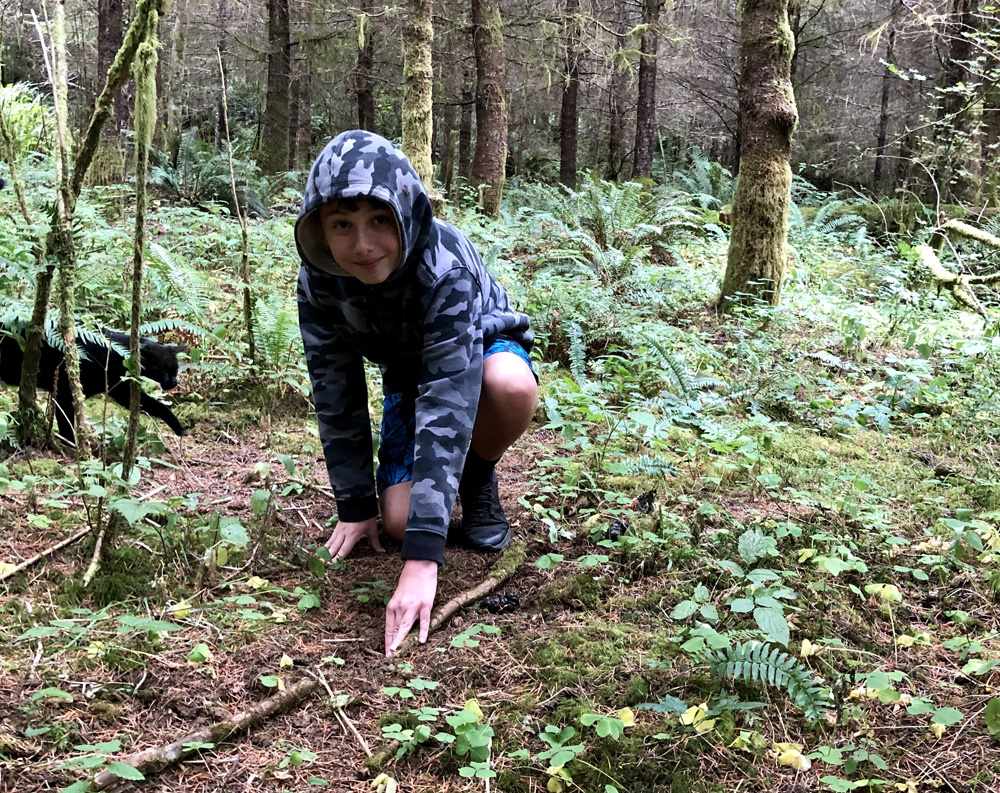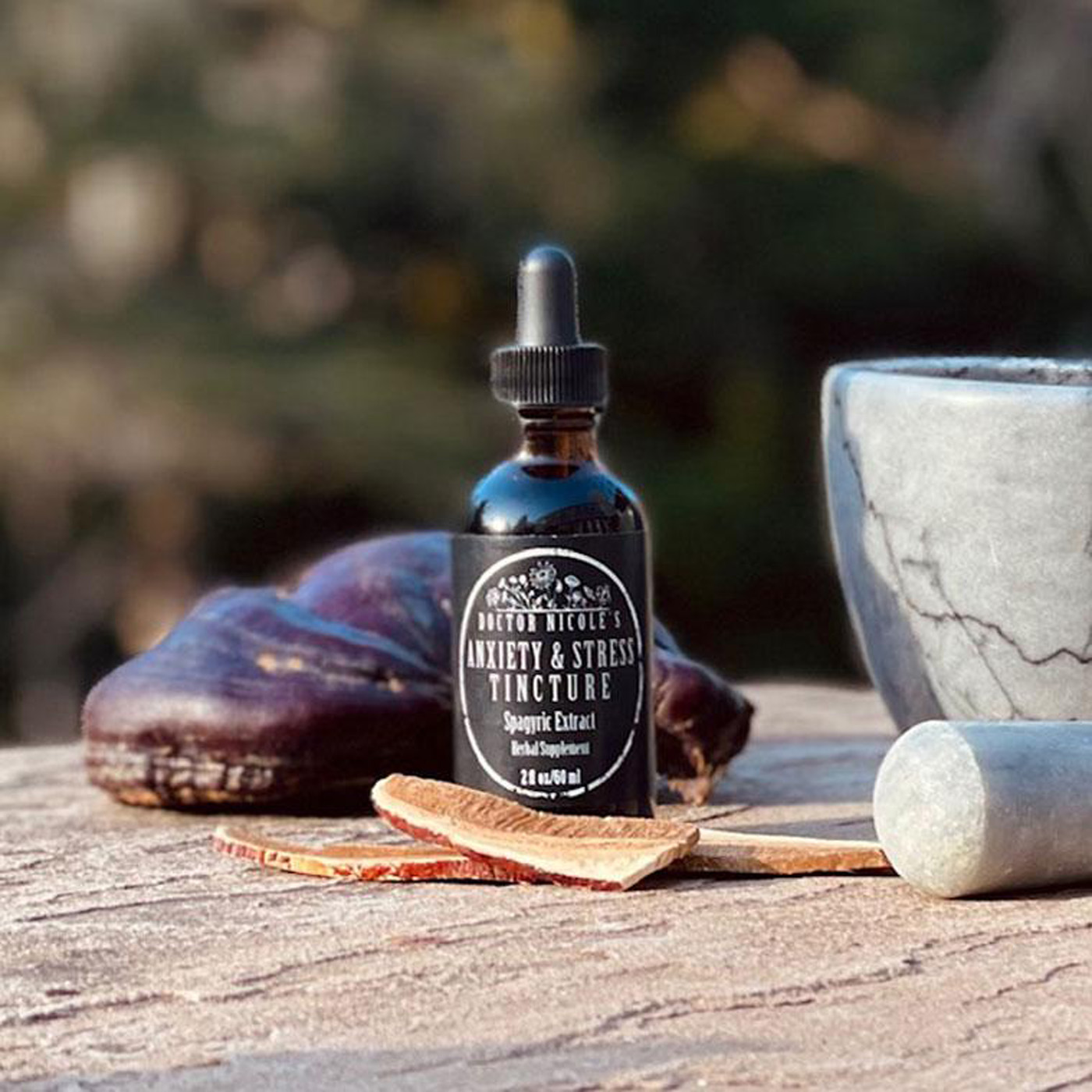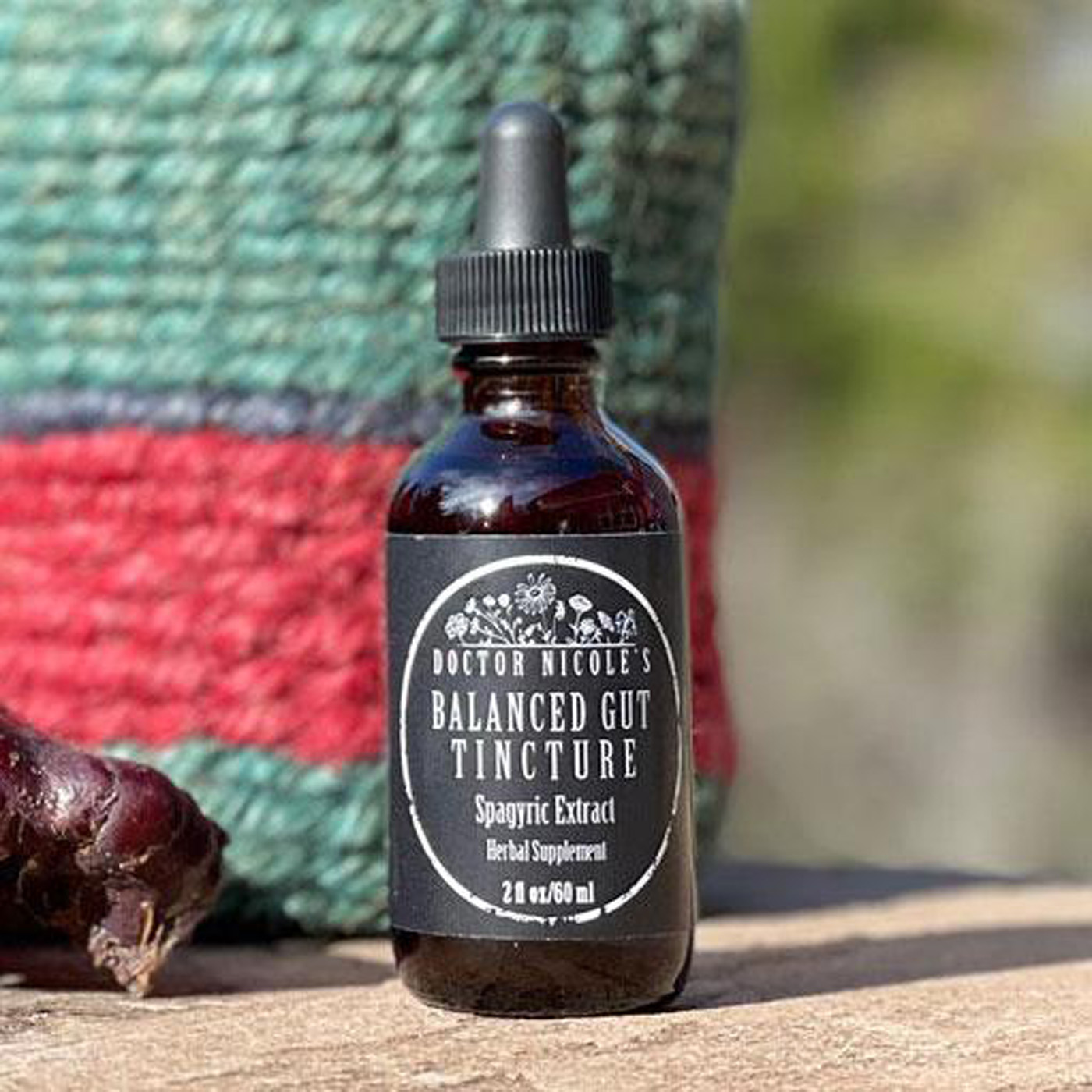Nature: A Recipe for Wellness
As parents, we intuitively know that spending time in the great outdoors is important for the growth and health of our children on many levels — even if it is simply venturing into an urban green space or backyard garden. After all humans are wired to be in the natural world. So it comes as no surprise that researchers discovered children who regularly interact with nature have more robust microbiomes and a lower risk of developing an autoimmune disease.
Since a healthy gut is the foundation for immunity, improved cognitive function, positive mood, and overall well being, it gives us incentive to get our children (and ourselves!) into nature as much as we can. Let’s have a look at what the research team found, along with additional methods for improving gut health that go hand-in-hand with spending time in natural environments.
Mimicking a Forest Floor in Urban Daycare Yards
A study based in Finland set out to discover if forest floor playgrounds could influence the microbiome of young children. They selected ten urban daycare centers whose cities had populations of more than 100,000 inhabitants. Seven of the standard daycare centers had little or no outdoor green space. The remaining three were nature-oriented and also participated in regular outings into the Boreal forest, serving as a positive control for the study.
The researchers then took four of the standard daycare yards and covered the gravel with forest floor, sod, planters for growing annuals, and peat blocks for climbing and digging. They classified these as “intervention daycares”. Three daycare yards remained unmodified to serve as controls.

The vegetation used to create the forest floor environment included: dwarf heather (Calluna vulgaris), blueberries (Vaccinium sp.), crowberry (Empetrum nigrum), and mosses (Pleurozium shreberi, Hylocomium splendens, Sphagnum sp., and Dicranum sp.). The sod consisted of fescues (Festuca sp.) and meadow grasses (Poa sp.).
Caretakers in the intervention sites encouraged children to interact with the natural elements through gardening activities, crafting natural materials, and games. Children played in the yards between 30 minutes and two hours, twice per day in both the intervention and standard daycare centers. Average time was 1.5 hours.
Each child ate a similar diet at both school and home. Additionally, animal contact, time spent outdoors or in nature after school, and the number of siblings were also similar among all the daycare groups. None of the participants who were taking probiotics or antibiotics were included in the study.
The team then collected soil samples from each yard and examined the diversity of skin bacterial composition in the children. This is an important measurement as it is directly tied to microbiome diversity. When the researchers analyzed the before and after data for the intervention daycares, they found that they had more diverse skin Proteobacterial and Gammaproteobacterial communities compared to those in standard daycare. In fact, the intervention daycare children had “diversities comparable to those in nature-oriented daycares.”1
The children with nature exposure also exhibited improved immunoregulation with an increased proportion of regulatory T cells (also called Tregs). These are the cells that regulate or suppress other cells in the immune system. Tregs control the immune response and help to prevent autoimmunity.
The team concluded that “Our findings suggest that biodiversity intervention enhances immunoregulatory pathways and provide an incentive for future prophylactic approaches to reduce the risk of immune-mediated diseases in urban societies.”
As we have seen, the health of the microbiome plays a significant role in immune system regulation and autoimmune conditions. In short, the microbiome can make (or break) our physical and mental well being. So it is essential to lay a solid foundation for gut health — keep reading for a few simple ways to do this!

Additional Tips for How to Support a Healthy (and Robust) Microbiome
If you find your gut health is less than ideal, simple lifestyle choices and dietary shifts can make a big impact. Herbal remedies are exceedingly helpful too! Here are a few ideas to get you started.
While we may not associate chronic stress with microbiome dysbiosis, researchers have found there is a direct correlation. Ongoing stress also leads to a condition known as leaky gut, where the gut lining becomes overly permeable and proteins and toxics leach into the bloodstream, causing systemic inflammation.3 Those with autoimmunity are especially prone to developing leaky gut. Moreover, chronic stress creates a problematic cycle where it impacts the bacteria in the gut, causing an overgrowth of E. coli, Serratia, and Proteus bacteria in the small intestine (known as SIBO).2 The bacteria then pump out their own stress hormones that create further proliferation. See my post, “How Stress Changes Your Microbiome for the Worse” to learn more about the research in this area.
Beyond stress management methods, my Anxiety & Stress Tincture can give you an additional layer of support. It soothes the nervous system, cools inflammation, boosts cognitive function, and helps your body adapt to stress in a healthy way.
Next is diet. Eating high-fiber, largely plant-based food can help to heal the damage caused by stress in the gut and encourage a healthy microbiome. The five areas to focus on are prebiotics, probiotics, insoluble fiber, vegetables, and resistant starch. This post details the specific foods found in each.
If you are seeking an easy-to-use solution for gut issues, my Balanced Gut Blend is an outstanding option. Formulated with reishi, turkey tail, and lion’s mane medicinal mushrooms, in addition to plantain, slippery elm, and marshmallow, it is a powerful blend of healing botanicals. It cools inflammation, protects and soothes the digestive tract so that it can heal, and feeds a healthy microbiome by encouraging “good” bacteria in the gut via prebiotics.
Visit the apothecary today and learn about the science behind these potent blends. Your gut will thank you for it!
Nicole Apelian
Nicole’s Apothecary Products in this Post
References
- Roslund, M. I., Puhakka, R., Grönroos, M., Nurminen, N., Oikarinen, S., Gazali, A. M., Cinek, O., Kramná, L., Siter, N., Vari, H. K., Soininen, L., Parajuli, A., Rajaniemi, J., Kinnunen, T., Laitinen, O. H., Hyöty, H., Sinkkonen, A., & ADELE research group (2020). Biodiversity intervention enhances immune regulation and health-associated commensal microbiota among daycare children. Science advances, 6(42), eaba2578. https://doi.org/10.1126/sciadv.aba2578
- “Short-chain fatty acids: microbial metabolites that alleviate stress-induced brain–gut axis alterations”, Marcel van de Wouw, Marcus Boehme, Joshua M. Lyte, Niamh Wiley, Conall Strain, Orla O’Sullivan, Gerard Clarke, Catherine Stanton, Timothy G. Dinan, John F. Cryan. https://doi.org/10.1113/JP276431
- “Stress and the microbiome” Dr. William Davis. January 12, 2022, https://drdavisinfinitehealth.com/2022/01/stress-and-the-microbiome/






